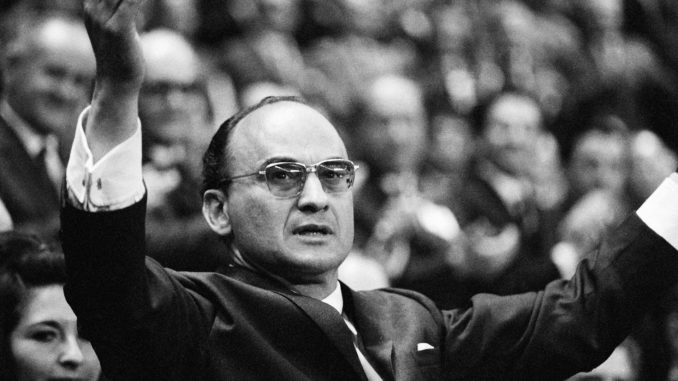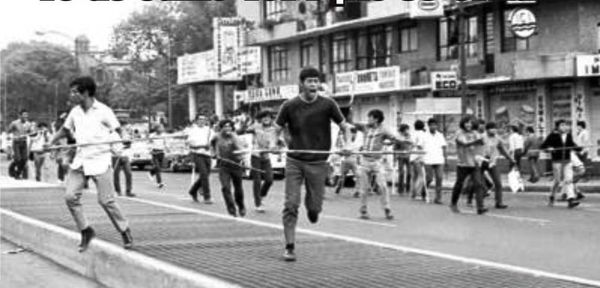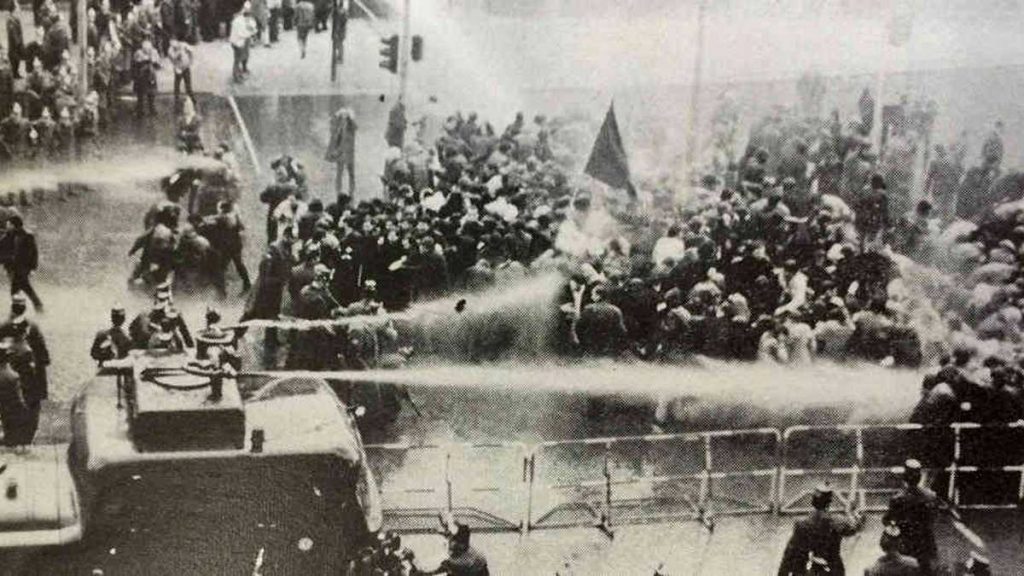
The death of the ex-president Luis Echeverría Álvarez has once again brought to the fore the debate around one of the darkest and most contradictory periods of Mexican history. Despite the fact that in 2005, Echeverría became one of the only former Mexican presidents to stand trial, the general sense is that he died in imputinity, since the prison sentence for his responsibility for the massacre on October 2nd, 1968 (perpetrated when he was the Secretary of Interior under Gustavo Díaz Ordaz) was commuted to house arrest, two years later he received an injunction, and finally in 2009 he was exonerated. He was never even tried for the Corpus Christi events, as the crimes were classified as common homicide and it was considered that the statute of limitations had expired.
Last January, for the 100th birthday of the PRI politician, we reflected here on the paradox of his administration (1970-1976) in which the promotion of a model which sought to bring well-being to the masses, a foreign policy guided by defense of national sovereignty, and the backing of the some of the most righteous causes, coexisted with a stark internal authoritarianism that provoked tragedies like the halconazo on the 10th of June 1971, the extermination of members and sympathizers of guerrilla movements in Guerrero, and the beginning of the forced disappearances in our country, a wound that remains open and at the heart of the cries of individuals and collectives fighting for justice.

In part for his central role in these events, and in part due to the extraordinary longevity that allowed him to survive the extinction of almost all the accompanied him in his rise to and exercise of power, Echeverría became the ultimate emblem of a regime and an era that today are overwhelmingly remembered for their repressive nature and for the denial of the democratic freedoms like freedom of expression. Thus, he is a figure identified by the new generations despite the passage of time: if one considers that Echeverria’s presidency concluded now over half a century ago, it is clear that the vast majority of Mexicans not only didn’t only experience it first hand, but that they probably have very tenuous notions of what happened during that time.

For the young people, as well as for many adults, it might seem incomprehensible that a government that viciously persecuted students, campesinos, trade-unionists, and in general an entire popular movement that would question his designs, at the same time would be the creator of undeniable social benefit, like the Autonomous Metropolitan University (UNAM), the one in Chapingo, the Bachelor’s College, the Conacyt (the National Council for Science and Technology), the National Housing Fund Institute for Workers (Infonavit), the Housing Fund of the ISSSTE (Institute for Social Security of State Workers), the National Tourism Fund (Fonatur), the National Fund for Artisanry (Fonart) and the National Fund of Employee Consumption (Fonacot), or the Office of the Federal Prosecutor for the Consumer (Profeco). It might come as a surprise that it was under the rule of Echeverría when two of the most iconic projects of neoliberal and globalized Mexico were initiated and designed: the tourist centers of Los Cabos and Cancún. Another aspect that perhaps has fallen into oblivion is the role of the right wing, and in particular big business, which did not criticize Echeverría for his authoritarian excesses, but rather for its social justice measures, for its solidarity with the democratic Chile, the Cuban revolution, and the Palestine and Saharaui people.
However, the following decade, the devaluation of the currency and the indebtedness of the State was caused, in part, by his politic of strong intervention in the economy, would be used as a pretext to impose economic liberalization, the handing over of national assets into private hands, the dismantling of social security and the prevalence of financial capital, that is, the neoliberal model. Undoubtedly, the failure ultimately of his bid to maintain the model of economic growth with the integration of important social sectors to the middle class (that is, the formula that had allowed the PRI to build and maintain its political hegemony) became a determining factor in the trial of history, which implacably indicts him for his serious violations of human rights.
This article was published in La Jornada on July 10th, 2022. https://jornada.com.mx/2022/07/10/opinion/002a1. English interpretation by Schools for Chiapas.
